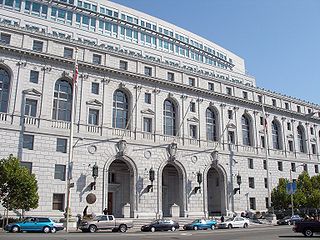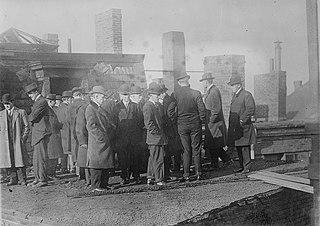A deposition in the law of the United States, or examination for discovery in the law of Canada, involves the taking of sworn, out-of-court oral testimony of a witness that may be reduced to a written transcript for later use in court or for discovery purposes. Depositions are commonly used in litigation in the United States and Canada. They are almost always conducted outside court by the lawyers themselves, with no judge present to supervise the examination.
Malicious prosecution is a common law intentional tort. Like the tort of abuse of process, its elements include (1) intentionally instituting and pursuing a legal action that is (2) brought without probable cause and (3) dismissed in favor of the victim of the malicious prosecution. In some jurisdictions, the term "malicious prosecution" denotes the wrongful initiation of criminal proceedings, while the term "malicious use of process" denotes the wrongful initiation of civil proceedings.
In law, a summary judgment, also referred to as judgment as a matter of law or summary disposition, is a judgment entered by a court for one party and against another party summarily, i.e., without a full trial. Summary judgments may be issued on the merits of an entire case, or on discrete issues in that case. The formulation of the summary judgment standard is stated in somewhat different ways by courts in different jurisdictions. In the United States, the presiding judge generally must find there is "no genuine dispute as to any material fact and the movant is entitled to judgment as a matter of law." In England and Wales, the court rules for a party without a full trial when "the claim, defence or issue has no real prospect of success and there is no other compelling reason why the case or issue should be disposed of at a trial."
A demurrer is a pleading in a lawsuit that objects to or challenges a pleading filed by an opposing party. The word demur means "to object"; a demurrer is the document that makes the objection. Lawyers informally define a demurrer as a defendant saying "So what?" to the pleading.
A subpoena duces tecum, or subpoena for production of evidence, is a court summons ordering the recipient to appear before the court and produce documents or other tangible evidence for use at a hearing or trial. In some jurisdictions, it can also be issued by legislative bodies such as county boards of supervisors.

Discovery, in the law of common law jurisdictions, is a pre-trial procedure in a lawsuit in which each party, through the law of civil procedure, can obtain evidence from the other party or parties by means of discovery devices such as interrogatories, requests for production of documents, requests for admissions and depositions. Discovery can be obtained from non-parties using subpoenas. When a discovery request is objected to, the requesting party may seek the assistance of the court by filing a motion to compel discovery.
In the legal system of the United States, a Brady disclosure consists of exculpatory or impeaching information and evidence that is material to the guilt or innocence or to the punishment of a defendant. The term comes from the 1963 U.S. Supreme Court case Brady v. Maryland, in which the Supreme Court ruled that suppression by the prosecution of evidence favorable to a defendant who has requested it violates due process.

Apple v. Does was a high-profile legal proceeding in United States of America notable for bringing into question the breadth of the shield law protecting journalists from being forced to reveal their sources, and whether that law applied to online news journalists writing about corporate trade secrets. The case was also notable for the large collection of amici curiae who joined in the matter.

A courtroom is the enclosed space in which courts of law are held in front of a judge. A number of courtrooms, which may also be known as "courts", may be housed in a courthouse. In recent years, courtrooms have been equipped with audiovisual technology to permit everyone present to clearly hear testimony and see exhibits.
The Virginia General District Court (GDC) is the lowest level of the Virginia court system, and is the court that most Virginians have contact with. The jurisdiction of the GDC is generally limited to traffic cases and other misdemeanors, civil cases involving amounts of under $25,000. There are 32 GDC districts, each having at least one judge, and each having a clerk of the court and a courthouse with courtroom facilities.
In American procedural law, a continuance is the postponement of a hearing, trial, or other scheduled court proceeding at the request of either or both parties in the dispute, or by the judge sua sponte. In response to delays in bringing cases to trial, some states have adopted "fast-track" rules that sharply limit the ability of judges to grant continuances. However, a motion for continuance may be granted when necessitated by unforeseeable events, or for other reasonable cause articulated by the movant, especially when the court deems it necessary and prudent in the "interest of justice."
Brady v. Maryland, 373 U.S. 83 (1963), was a landmark United States Supreme Court case that established that the prosecution must turn over all evidence that might exonerate the defendant to the defense. The prosecution failed to do so for Brady, and he was convicted. Brady challenged his conviction, arguing it had been contrary to the Due Process Clause of the Fourteenth Amendment to the United States Constitution.
In the United States, the Jencks Act requires the prosecutor to produce a verbatim statement or report made by a government witness or prospective government witness, but only after the witness has testified.

Peter J. Pitchess was the 28th Sheriff of Los Angeles County, California, serving from 1958 to 1981. He is credited with modernizing the Los Angeles County Sheriff's Department, turning the department into the sixth-largest police department, and the largest sheriff's department, in the United States.

The Wisconsin circuit courts are the general trial courts in the state of Wisconsin. There are currently 69 circuits in the state, divided into 10 judicial administrative districts. Circuit court judges hear and decide both civil and criminal cases. Each of the 249 circuit court judges are elected and serve six-year terms.

Grand juries in the United States are groups of citizens empowered by United States federal or state law to conduct legal proceedings, chiefly investigating potential criminal conduct and determining whether criminal charges should be brought. The grand jury originated under the law of England and spread through colonization to other jurisdictions as part of the common law. Today, however, the United States is one of only two jurisdictions, along with Liberia, that continues to use the grand jury to screen criminal indictments.
As one of the fifty states of the United States, California follows common law criminal procedure. The principal source of law for California criminal procedure is the California Penal Code, Part 2, "Of Criminal Procedure."

The writ of mandate is a type of extraordinary writ in the U.S. state of California. In California, certain writs are used by the superior courts, courts of appeal and the Supreme Court to command lower bodies, including both courts and administrative agencies, to do or not to do certain things. A writ of mandate may be granted by a court as an order to an inferior tribunal, corporation, board or person, both public and private. Unlike the federal court system, where interlocutory appeals may be taken on a permissive basis and mandamus are usually used to contest recusal decisions, the writ of mandate in California is not restricted to purely ministerial tasks, but can be used to correct any legal error by the trial court. Nonetheless, ordinary writ relief in the Court of Appeal is rarely granted.

The special motion to strike is a motion authorized by the California Code of Civil Procedure intended to stop strategic lawsuits against public participation (SLAPPs). They were created in 1992 with the purpose of encouraging participation in matters of public significance. The motion allows a litigant to strike a complaint when it arises from conduct in furtherance of the moving party's rights to petition or free speech in connection with a public issue. If the moving party prevails, they are entitled to attorney's fees by right. The motion is codified in section 425.16 of the Code. More than 300 published court opinions have interpreted and applied California's anti-SLAPP law. Because the right to file a special motion to strike is substantive immunity to suit, rather than a merely procedural right, federal courts apply the law to state law claims they hear under diversity jurisdiction.
The California Racial Justice Act of 2020 bars the state from seeking or securing a criminal conviction or imposing a sentence on the basis of race, ethnicity or national origin. The Act, in part, allows a person to challenge their criminal case if there are statistical disparities in how people of different races are either charged, convicted or sentenced of crimes. The Act counters the effect of the widely criticized 1987 Supreme Court decision in McClesky v. Kemp, which rejected the use of statistical disparities in the application of the death penalty to prove the kind of intentional discrimination required for a constitutional violation. The Act, however, goes beyond countering McClesky to also allow a defendant to challenge their charge, conviction or sentence if a judge, attorney, law enforcement officer, expert witness, or juror exhibited bias or animus towards the defendant because of their race, ethnicity, or national origin or if one of those same actors used racially discriminatory language during the trial. The CRJA only applies prospectively to cases sentenced after January 1, 2021. The Act is codified in Sections 745, 1473 and 1473.7 of the California Penal Code.